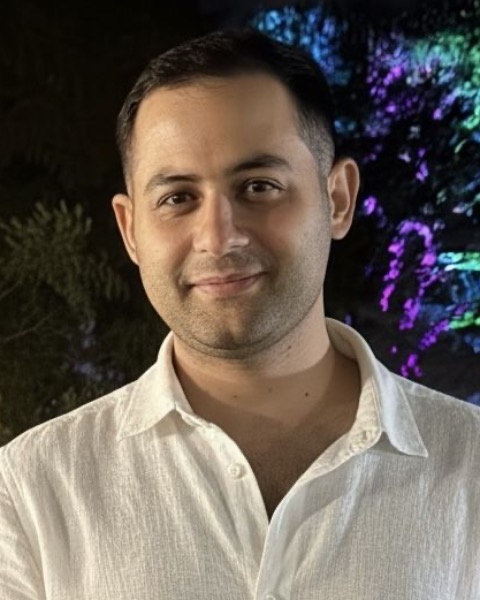Cellular and Molecular Bioengineering
Cellular and Molecular Bioengineering - Poster Session C & D
H24 - MediaMaxxing: Culture of Prostate Cancer Cells Under Normoxic and Hypoxic Conditions Using Bovine Platelet Lysate as an Alternative Growth Supplement
Friday, October 10, 2025
10:00 AM - 11:00 AM PDT
Location: Exhibit Hall F, G & H

Ehsan Aalaei
PhD Student
Rice University
Houston, Texas, United States
Michael King
Professor
Rice University, United States
Presenting Author(s)
Primary Investigator(s)
Introduction: : For in vitro cell culture, providing appropriate growth supplements is essential. Fetal bovine serum (FBS) is the most commonly used supplement added to culture media. FBS is derived from bovine fetuses obtained from slaughtered pregnant livestock. While widely used, FBS raises several concerns, most notably ethical issues, as well as high cost, batch-to-batch variability, and supply chain challenges. These limitations have led researchers to explore alternatives, such as human platelet lysate (hPL). Although hPL performs well in many applications, it still suffers from variability due to donor characteristics, limited availability, and risk of pathogen contamination [1]. Recently, a new supplement called bovine platelet lysate (bPL), marketed as Plenty™, has been introduced. bPL is significantly more affordable than FBS and is derived from live cattle in a minimally invasive manner, reducing ethical concerns. While bPL has shown promise in supporting breast cancer cell growth, its performance in prostate cancer (PC) models, particularly under physiologically relevant oxygen conditions, remains largely unexplored. This study investigates the viability and proliferative behavior of PC3 prostate cancer cells cultured in RPMI medium supplemented with bPL under normoxic (21% O₂) and hypoxic (1% O₂) environments. The present work also evaluates the viability of LNCaP prostate cancer cells in bPL-supplemented media under the same oxygen conditions, and further assesses the ability of bPL to support 3D spheroid formation of LNCaP cells in both normoxia and hypoxia.
Materials and
Methods: : PC3 prostate cancer cells were cultured in two different media formulations based on RPMI 1640: one supplemented with 10% Heat-Inactivated fetal bovine serum (HI-FBS), and the other with 10% bPL. Both media also contained 1% penicillin-streptomycin and HEPES. LNCaP prostate cancer cells were cultured in RPMI 1640 supplemented with 10% non-heat-inactivated FBS, 1% penicillin-streptomycin, sodium pyruvate, and HEPES. An alternative formulation was prepared using 10% bPL in place of non-heat-inactivated FBS, while keeping all other supplements the same. HI-FBS is commercially prepared by heating at 56 °C for 30 minutes to deactivate complement proteins, which can interfere with immune-based assays or harm sensitive primary cells. However, this thermal process can degrade heat-sensitive components such as growth factors, hormones, and vitamins. For certain cell lines that rely on these components for optimal growth, non-heat-inactivated FBS is preferred.
For each media condition, cells were expanded and maintained under either normoxic (21% oxygen) or hypoxic (1% oxygen) conditions for three days. Cell viability was assessed every 24 hours using the Annexin V/Propidium Iodide (AV/PI) assay. Proliferation was evaluated by analyzing Ki67 expression via flow cytometry.
For 3D cell culture, LNCaP cells, which exhibit an epithelial phenotype unlike PC3 cells that display a mesenchymal-like phenotype with weak cell-cell adhesion, were cultured using a Superhydrophobic Array Device (ShArD) designed and developed by King Lab to promote cluster formation [2]. The resulting clusters were stained with DAPI and E-cadherin for confocal imaging. 3D cultures were performed under both normoxic and hypoxic conditions.
Results, Conclusions, and Discussions:: Results and
Discussion: Under normoxic conditions, cell viability initially decreased on Day 1 in the bPL-supplemented group, likely due to adaptation following the switch from FBS. However, viability stabilized over the next two days, indicating that PC3 cells could adapt to the new supplement and maintain survival. In contrast, under hypoxic conditions, cells cultured in bPL adapted more quickly and showed higher viability by Day 3 compared to those cultured in FBS (Fig. 1a–d). Ki67 expression, used as a marker of proliferation, remained largely stable across the three-day period in both normoxic and hypoxic conditions. Although a significant increase was observed on Day 2, this effect was transient and not sustained on Day 3 (Fig. 1e–f). On the other hand, Figure 1g–j shows that the viability of LNCaP cells was adversely affected by bPL, which could be due to a lack of essential components absent from both HI-FBS and bPL. However, Figure 1k illustrates that bPL supported cluster formation under both normoxic and hypoxic conditions.
Conclusions and Future Work:
Our findings demonstrate that bPL effectively supports PC3 prostate cancer cell growth and viability, making it a promising alternative to HI-FBS. LNCaP cells, which are known to be sensitive to the loss of certain heat-sensitive components found in non-heat-inactivated FBS, showed reduced viability when cultured with bPL, similar to what is observed with HI-FBS, possibly due to the absence of these components in both supplements. Nevertheless, bPL supported cell clustering in both normoxic and hypoxic conditions for this cell type.
Future studies will investigate the use of bPL in long-term cell expansion and serial passaging to assess its impact on proliferation consistency and phenotypic stability over time. Comparative analyses will also aim to determine which supplement more accurately replicates the in vivo tumor microenvironment.
Acknowledgements and/or References (Optional): : Acknowledgements: This research was funded by the Cancer Prevention and Research Institute of Texas (CPRIT) to M.R.K., Grant No. RR230029.
References: [1] Burnouf T, Strunk D, Koh MB, Schallmoser K. Human platelet lysate: Replacing fetal bovine serum as a gold standard for human cell propagation? Biomaterials. 2016 Jan;76:371-87.
[2] Lopez-Cavestany M, Wright OA, Reckhorn NT, Carter AT, Jayawardana K, Nguyen T, Briggs DP, Koktysh DS, Linares AE, Li D, King MR. Superhydrophobic array devices for the enhanced formation of 3D cancer models. ACS Nano. 2024;18(34):23637–54.
